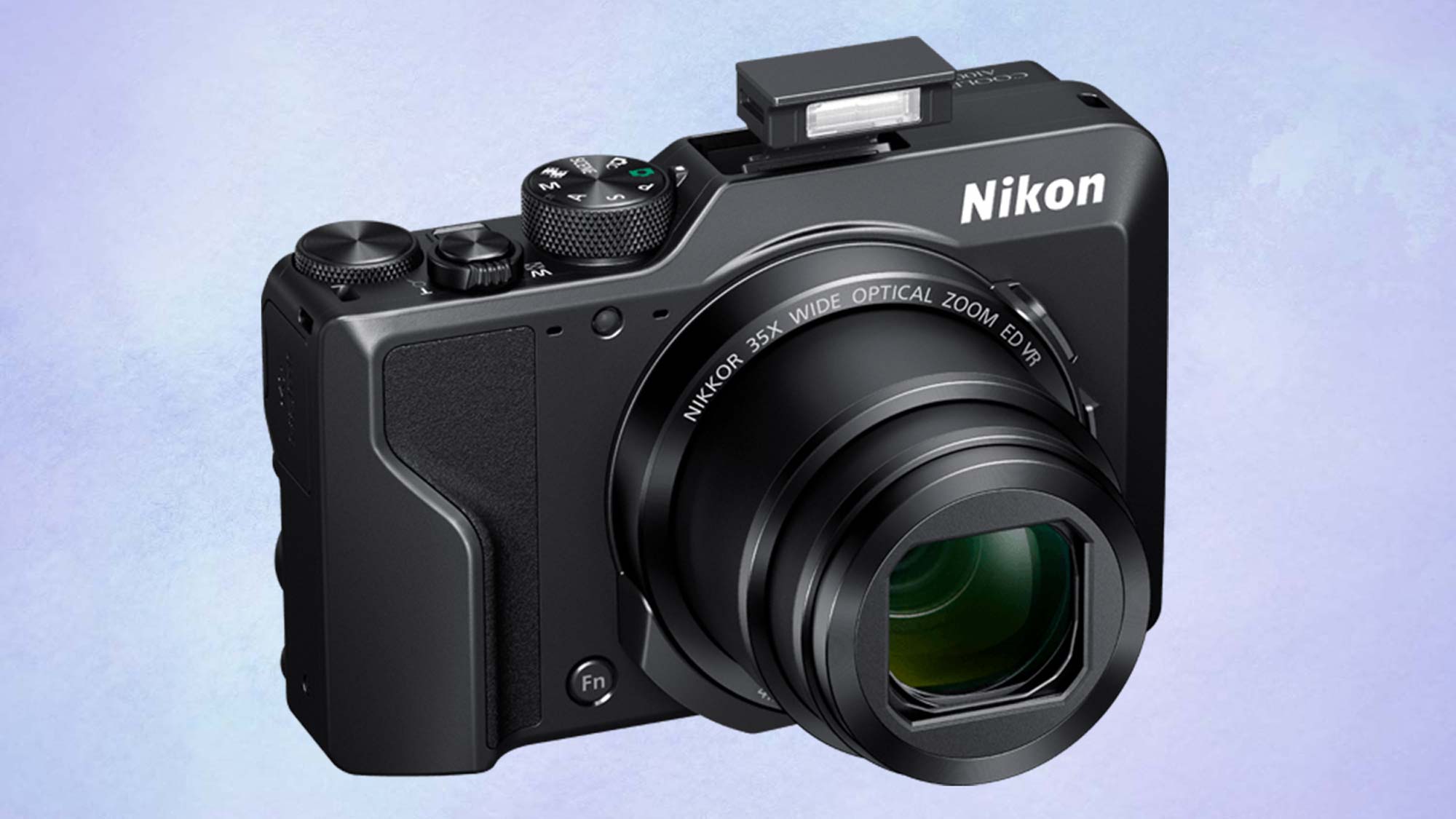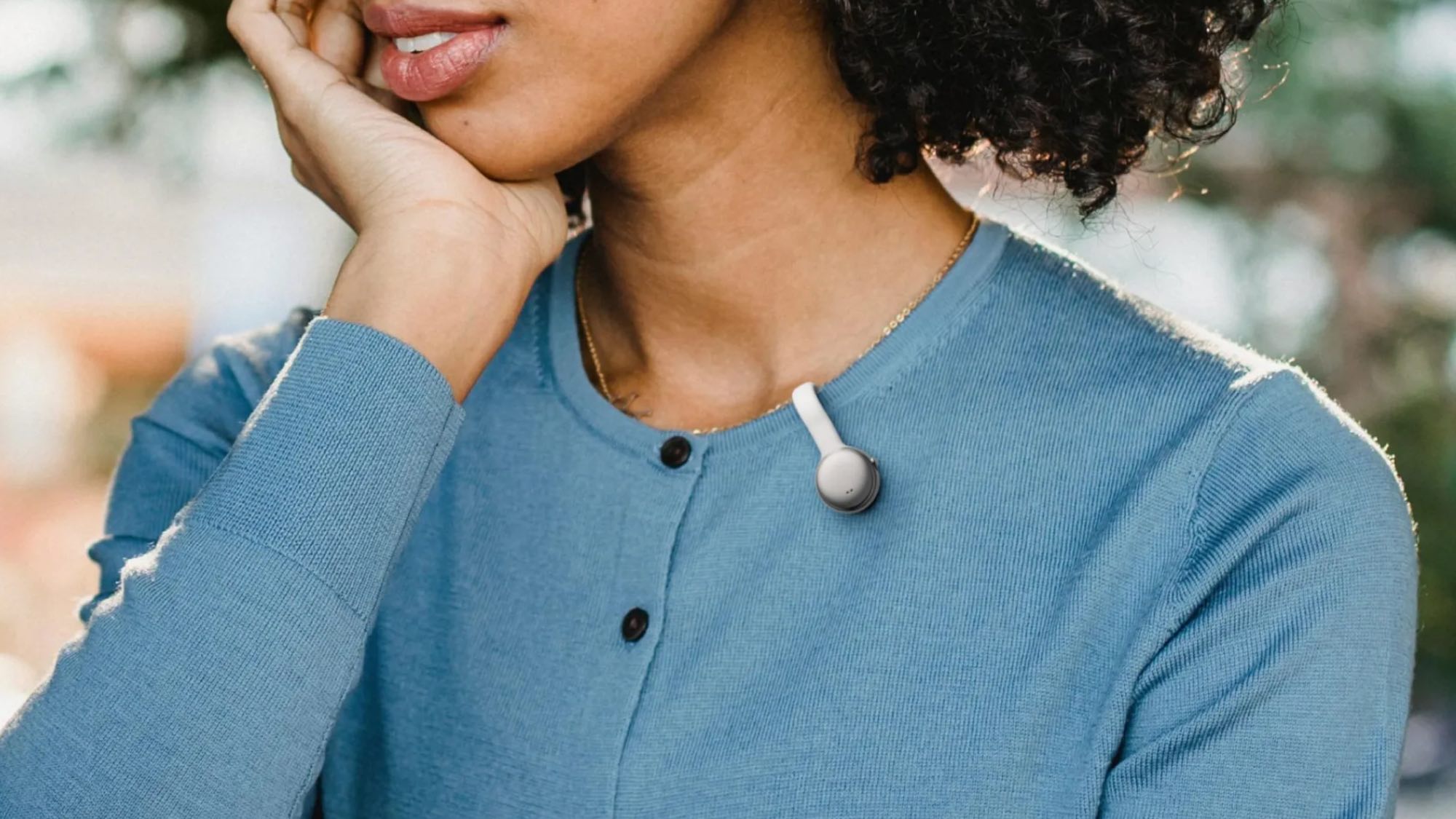Tom's Guide Verdict
While the Nikon A1000 has a longer zoom than the Panasonic ZS80, we prefer the image quality from the latter.
Pros
- +
Sturdy construction
- +
Intuitive controls and menus
- +
Generous 35x zoom
- +
Crisp LCD viewfinder
- +
Touch screen
Cons
- -
Less detail and color than competing cameras
- -
No subject tracking in video
- -
Hyperactive eye sensor
Why you can trust Tom's Guide
One thing that smartphones can't do is give you a great zoom, which is where cameras like the Nikon Coolpix A1000 ($480) come in. This camera packs a generous 35x zoom lens (24-840mm, full-frame focal length equivalent) into a compact design with intuitive controls. Overall image and video quality, however, generally trail those of its worthier competitor, Panasonic's Lumix ZS80.
Design: Compact and (mostly) intuitive
The Coolpix A1000 offers a lot of zoom for its size, with a 35x zoom lens that collapses into a sturdy chassis measuring just 1.7 inches thick. A small but solid right-hand grip puts most controls in easy reach of the thumb and forefinger; that include a top control wheel for adjusting parameters like aperture and shutter speed. An Fn button sits on the front near where your ring finger rests and brings up shortcut menus for sensitivity (ISO), white balance, exposure mode and other settings. A slider on the opposite side of the lens barrel defaults to a secondary zoom control, but it can be programmed to instead set manual focus, aperture, ISO, exposure compensation or white balance.

The 3-inch touch screen provides quick access to a limited set of controls, and you can tap to set the focus (and trigger the shutter) anywhere in the on-screen preview. The screen is sharp and bright and tilts up 90 degrees, so you can hold the camera low and against your body for steadier video. You can also tilt the screen 180 degrees down, so it faces you from underneath the camera, which is good for composing selfies. With the small (0.2-inch) but sharp and bright LCD viewfinder, you can frame shots on sunny days when the big LCD is hard to see.
There are two main annoyances. Like with many cameras, a proximity sensor turns the viewfinder on (and the large screen off) when you place the camera up to your eye. But you'll trigger the A1000's hyperactive sensor when a finger or anything else comes remotely near the camera's left side. (You can turn the sensor off and use the manual toggle button to the right of the viewfinder.) Also annoying: An onscreen pop-up that explains the different modes, such as Auto or Shutter Priority, for an agonizing 5 seconds every time you switch modes.
A final gripe: You can't simply drag and drop images from the camera to a computer over USB. Instead, you have to first download and install Nikon's ViewNX-i software to handle image imports. Image-editing programs like Apple Photos can import right from the camera, without the Nikon software, however.
Nikon claims of battery life of approximately 250 shots or 55 minutes of video per charge. (Individual videos cannot exceed 29 minutes, but that is pretty darn long.)
Zoom: Plenty long
Long zoom allows camera makers to compete against cellphones. While many lenses exceed 60x, this Nikon's 35x is more than enough for capturing nearly anything (short of the moon, for which I'd recommend the Canon PowerShot SX70 HS). I was able to capture sharp close-up photos of ships from more than 2 miles across San Francisco Bay with the A1000.
Get instant access to breaking news, the hottest reviews, great deals and helpful tips.
MORE: Best Cameras 2019
The only way to fit such a long lens into such a compact form factor is to pair it with a comparatively tiny image sensor. The A1000's 16-megapixel, so-called "1/2.3-inch" sensor measures 28 square millimeters. That's not a whole lot bigger than the 23.5 square millimeters in the iPhone XS Max. (Those chips have lower resolution of 12MP and some advanced features to make up for the smaller size.)
Consequently, detail is so-so at longer zoom ranges. In photos of Alcatraz taken from about 2 miles away, the old prison building and the rocky island look a bit cartoonish. However, the image from the A1000 was sharper than a similar shot from what is perhaps the A1000's closest competitor, the Panasonic ZS80 (20.3MP, 30x zoom).
Overall Image Quality: Almost smartphone-grade
Given the close size of their image sensors, it's not surprising that the A1000 doesn't offer higher image quality than an iPhone XS at comparable optical zoom (26 mm and 52 mm). In fact, the iPhone images look a tad better, with finer detail, stronger contrast and richer color in both a close-up of vegetation and a wide shot of Edwardian houses in San Francisco. (iPhones tend to boost colors beyond natural levels, especially apparent in the superblue sky over the houses in this shot.)
As with most other photos, I shot the houses in the Nikon's auto mode, which provides extra color and contrast. (Vegetation was shot in Program mode, in the Macro setting.)
MORE: Best Camera Phone 2019
And the iPhone XS isn't the only smartphone camera of such quality. The Google Pixel 3 performs even better, per our tests.
The A1000 also fell short of the Panasonic ZS80 throughout our testing. In a macro shot of flowers, for instance, the A1000's photo has weaker contrast, and it washed out some detail compared to the ZS80. (Both images were shot in Program mode.) The ZS80 also captured finer details in the trees in front of the houses.
The A1000 falls further behind in low-light photography, as seen in this series of an improv troupe playing at a local theater. In the camera's auto mode, the A1000 tends to favor longer exposures than the ZS80, such as one-fifteenth of a second at ISO 400, versus one-eightieth at ISO 1000. Such a slow shutter makes capturing any kind of action difficult. What's more, the camera tends to overexpose details, which is especially obvious in the photo of the player at the left.
For a sense of that, see this second image of the improv players, also shot at one-fifteenth of a second. It's not too far behind the quality of a similar photo by the far higher-grade Sony RX100 III, which has a sensor roughly four times larger.
As would be expected with any camera these days, the A1000's screen tilts to face forward, so you can capture selfies. I shot quite a few and found the sharpness to be pretty good. The iPhone XS and Panasonic ZS80 capture slightly more detail, should you want to inspect the pores in your skin.
MORE: Best Point and Shoot Camera 2019
The Nikon A1000 was rather inconsistent on color, however. In some shots, my face looked greenish. In others, it was a tad warmer than in reality, but in a pleasing way. (My hair is dyed reddish, so it doesn't provide a good way to judge color accuracy.) The bottom line here: While the A1000 takes pretty good selfies, your smartphone is probably at least as good and easier to use for this.
Video Quality: Adequate
The A1000's video quality roughly tracks with its still-image quality: sufficient when shooting in bright light. In clips of a fountain in Golden Gate Park (shot at roughly 50mm focal length), the A1000's video has slightly less detail than the Panasonic ZS80's video, and far less than what the iPhone XS captured. That phone also captures by far the richest color.
The Nikon A1000 and Panasonic ZS80 are closely matched in a wide-angle (26mm) video of flowers and plants shot at 4K (3,840 x 2,160/30 fps) resolution. Each camera succumbs to the very bright afternoon light, causing elements like the yellow flowers to be overexposed. The iPhone XS blows both away, with richer color and far less overexposure.
Of course, the iPhone doesn't have much of a zoom lens, so how well does the Nikon A1000 hold up at telephoto? First of all, the ability to capture action from a mile or more away is fantastic in its own right. A video at 35x zoom transforms a dot on San Francisco Bay into a detailed clip of a tour boat bouncing on the waves. But once again, the Panasonic ZS80 captures crisper details, despite having a slightly lesser max telephoto focal length of 720mm.
In still-photo mode (if not in the full auto setting), the A1000 offers subject-tracking autofocus. (Press Menu > AF Area Mode > Subject, then tap the screen to select the subject.) But unlike the Panasonic ZS80, Nikon's camera doesn't also offer subject tracking for video. You can see in the zoom-out from the tourist boat that the A1000 occasionally loses focus while the ZS80 keeps relatively sharp.
Despite the lack of tracking, however, the A1000 video retains good focus, even with the fast motion of the improv troupe. Colors do have a bit of a low-fi, pastel look in the challenging lighting, however.
Bottom Line
The Nikon A1000 is a competent compact, zoom camera, but it's not your best option. Panasonic's ZS80, comparable in price and specs, captures better quality in most images and videos. And for wide-angle or 50mm shooting, even a high-end smartphone camera may be better. But if you need a camera with a very long zoom for less than $500, the Nikon A1000 is worth your consideration.
Sean Captain is a freelance technology and science writer, editor and photographer. At Tom's Guide, he has reviewed cameras, including most of Sony's Alpha A6000-series mirrorless cameras, as well as other photography-related content. He has also written for Fast Company, The New York Times, The Wall Street Journal, and Wired.



